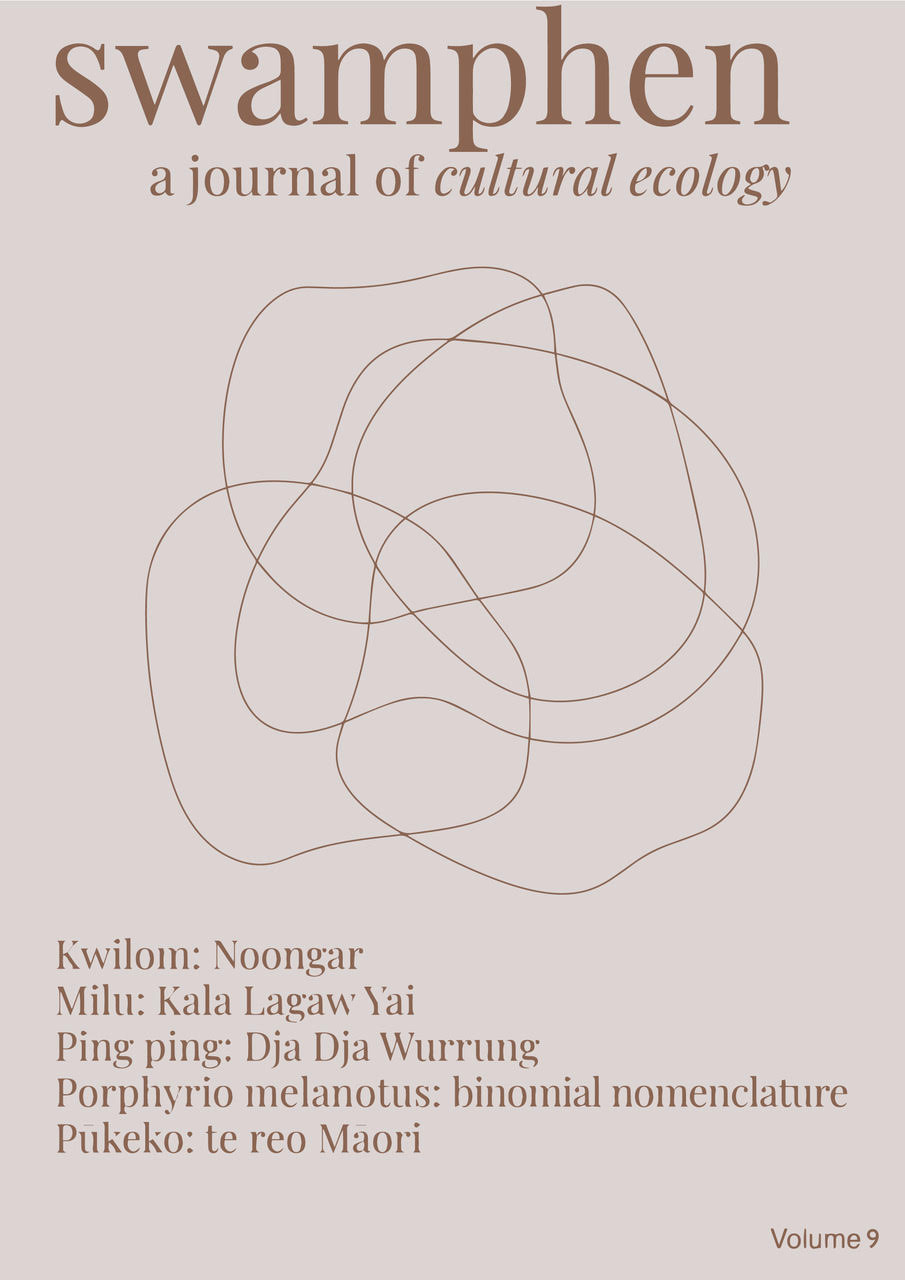Setting Fire to the Poetic Correspondence of Multispecies Relationships
DOI:
https://doi.org/10.60162/swamphen.9.17540Keywords:
multispecies, animals, poetry, Australia, aporiaAbstract
This poetic work is a multispecies love letter seeking to make the reader aware of the strange aporia of human ‘love’ for animals.[1] Contradictory human expressions of love, care, indifference, and harm towards animals can be seen in words that change perceptions of animals (as individuals, groups or in general). Consider the changing status of a ‘pet’ cat being discarded and becoming ‘feral’. Is ‘it’ a ‘pest’ to be ‘culled’, not even ‘killed’ or ‘put to sleep’ or can ‘they’ be ‘rescued’? This work explores multiple and conflicting affective outcomes words have on building compassion, understanding and support for animals, or adding to misconceptions which can result in disregard or violent treatment. The words we use to represent animals and express our relationships to them can reduce animals to iconic national symbols and supportive anthropocentric tools, or to draw out the diversity, multiplicity and intrinsic value of animal being and create space for animals in the text.
The poem focuses on the contemporary Australian context for the aporia of human love for animals. It grounds the work in place and time by using Australian phrases, idioms, slang, associations, terms and names for animals, plants, and places while concentrating on recent events of bushfires, droughts, floods, and pandemic isolation. It references ongoing Australian settler-colonial practices where human animal entanglements and conflicts are highlighted, including horse racing, hunting, bushwalking, fishing, and farming.
Repetition and wordplay are used to amplify, destabilize, complicate, confuse and decentre human perspectives. The method is informed by the fictocritical work of Ania Walwicz in horse utilizing ‘The process of associative thought and reflection. Improvisation and analysis. The flight of thought, a trajectory and reflection, retrieval, recoil. The use of multilevel text comprising poetics, theory and appropriated text’ (5). The poet aims to draw attention to the ways our relationships with animals are constructed and circulated through our use of language which forms an inherently anthropocentric frame of reference. Unresolved contradictions between intimacy and distance in human animal relationships are used to create a space of questioning to provoke thought.
Work Cited
Walwicz, Ania. horse: A Psychodramatic Enactment of a Fairytale. Crawley, Western Australia: UWAP, 2018. Print.
[1]Although encompassing both, ‘animals’ is used here to differentiate ‘animals of different species’ from ‘human animals.’ Terms like ‘nonhuman animals’ and ‘other animals’ are definitions centring humans, in terms of what is not human rather than what are these beings. Words like ‘beast’ also have othering meanings.
Downloads
Published
Issue
Section
License
Authors who publish with this journal agree to the following terms:- Authors retain copyright and grant the journal right of first publication with the work simultaneously licensed under a Creative Commons Attribution License that allows others to share the work with an acknowledgement of the work's authorship and initial publication in this journal.
- Authors are able to enter into separate, additional contractual arrangements for the non-exclusive distribution of the journal's published version of the work (e.g., post it to an institutional repository or publish it in a book), with an acknowledgement of its initial publication in this journal.
- Authors are permitted and encouraged to post their work online (e.g., in institutional repositories or on their website) prior to and during the submission process, as it can lead to productive exchanges, as well as earlier and greater citation of published work (See The Effect of Open Access).

